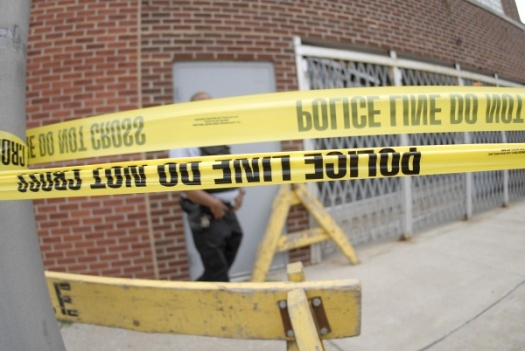
@font-face { font-family: “Times New Roman”; }p.MsoNormal, li.MsoNormal, div.MsoNormal { margin: 0in 0in 0.0001pt; font-size: 12pt; font-family: “Times New Roman”; }table.MsoNormalTable { font-size: 10pt; font-family: “Times New Roman”; }div.Section1 { page: Section1; }
Dozens of Hyde Park-Kenwood residents skeptical with a proposed plan to close the Prairie District (21st) police station and consolidate it with the nearby Central (1st) and Wentworth (2nd) District stations vented, questioned and aired their concerns to city and police officials at recent multiple community forums.
Officials with the Mayor’s office and the Chicago Police Department, along with Alds. William Burns (4th) and Pat Dowell (3rd) attended a meeting earlier this month at Sixth Grace Presbyterian Church, 600 E. 35th St., and attempted to explain to the public the purpose behind Mayor Rahm Emanuel’s merger intentions.
A similar meeting was held last month in the 3rd Ward.
“You will see more police officers,” Chicago Police First Deputy Superintendent Al Wysinger reassured the crowd. “We are looking for beat integrity. We want the same officers going to the same beat all the time.”
The station is located at 300 E. 29th St. and has approximately 230 officers.
At the 3rd Ward meeting, residents were told that roughly 75 percent of Prairie District officers would be assigned to Wentworth, making it one of the most staffed districts in the city.
The Prairie District encompasses Hyde Park and parts of Kenwood just east of Cottage Grove Avenue from 25th Street through 61st Street near the University of Chicago campus.
The Central District would run from Lake Street and the Chicago River to 31st Street. The Wentworth District includes portions of Cottage Grove and stretches to the Dan Ryan Expressway and the lakefront.
Although it had been reported combining police district responsibilities was implemented in part due to Emanuel’s proposed 2012 budget plan as the city faces a $636 million deficit, Felicia Davis, first deputy chief of staff for the mayor, said the Prairie District would have been under consideration for changes even if the city was not suffering financially.
“Changes were recommended even if the city was working at a surplus,” Davis said. “The changes that are being made are being made for operational reasons. The budget time is the time is where you lay the foundation how you are going to be structured in 2012. So the two are coming together at this point.”
“Think about that for a moment,” said Davis. “Serving all the residents in that geographic area are going to be met. To meet the needs of all those who reside in that area from Dan Ryan expressway to the lake.”
While residents were promised improved services and assistance in building relationships between patrolmen and residents, not everyone who lived in the community was sold on the idea considering the district has seen a 300 percent surge in murders since 2010, while the Central and Wentworth districts have seen decreases in fatalities, according to Chicago Police statistics.
“You are not trustworthy. Not you personally, but the institution,” said Gap Community Organization president Leonard McGee about his displeasure of the way City Hall has conducted business regarding the consolidation process. “At the end of the day you are saying we don’t count. You are not working with the people in the community.
Others were under the impression the move was forced on the community without much consideration for the residents in mind.
“City employees work for us,” a female resident shouted during the question and answer portion of the program. “This should not be a dictatorship. We pay taxes. It is about respect.”
Clifford Brown, 41, who lives in the Prairie District, was concerned about the potential of “a police state” being established with such heavy police presence a possibility.
Burns, who made sure to notify those in attendance that the consolidation plan was not his idea, understood why many of his constituents would be leery about such drastic changes imposed by the city.
“It is well deserved skepticism when City Hall says we’re here to help,” Burns said. “We (the community) don’t always get to participate in the decision-making process, and at the end of the day those decisions have had a negative impact on our community.”
In the event the proposal is approved via a City Council vote Nov. 16, the consolidation plan would then be official January 1, 2012.
The controversial plan also calls for the Belmont District (19th) Belmont station, 2452 W. Belmont Ave, to be closed and combined with the Town Hall District (23rd) location at 850 W. Addison St.
Additionally, the Wood District (13th) police station, 937 N. Wood St. would also be consolidated, which promoted many residents to hold rallies and sign petitions with the hopes of saving the station.
Copyright 2011 Chicago Defender

